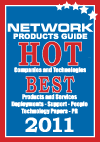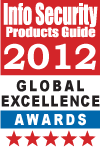Mobile computing is quickly becoming the cornerstone of education in America. Whether schools are purchasing mobile devices for students or they are adopting a BYOD (bring your own device) policy, students who are not incorporating smart phones, iPod touch devices, tablets or laptops into their learning are rapidly finding themselves on the wrong side of a new digital divide.
But of course, to take full advantage of mobile computing in the classroom, you need a connection to the Internet, and for a mobile device, this means a connection via Wi-Fi. This can pose some security risks, especially for schools. When it comes to security, Wi-Fi can quickly turn from a perfect solution to a perfect nightmare because of any number of the following security concerns. Here are the most common security issues and how to solve them.
Rogue Access Points
This threat takes place when the attacker sets up a fake access point that tricks users into connecting to it, rather than through a legitimate connection. Whether it’s a student or teacher connecting, the traffic can be sniffed for any information that passes through the rogue point, compromising confidential information or user credentials.
Additionally, rogue access points cause service degradation in the TTL value in all packets that traverse through it. And if configured to do so, rogue access points can assign IP addresses to wireless devices instead of the school’s DHCP server, causing a loss of service. This is usually one of the first indications that there is a rogue access point on your network.
Once a rogue access point has been identified, locating and removing it is the next step. However, since most rogue access points are hidden, finding the physical device can be difficult.
One of the best methods for locating these devices on your campus is called the convergence method. This requires a WLAN radio card with an omnidirectional antenna (which is what most notebook computers use) and software that will measure signal strength or a specialized hardware RF signal strength meter. Once the signal from the rogue device is picked up, you play a high tech version of hot and cold as the signal strength will increase as you get closer to the access point. The search should be done by segmenting the area into four quadrants. Once the signal is found, the quadrant it is located in should be segmented again, and so on until the device is found.
Multiple Wi-Fi Networks
In many districts, two or more networks are set up. One network is typically for internal employee use and a second network that has been configured for public or even student use. Connecting to the wrong network can mean the difference between sending encrypted data and data in plain text. Without encryption, sensitive student information and employee information, can be easily captured via a traffic sniffer or man in the middle attack.
Even layer two and layer three encryption are often insufficient for sensitive information, so most wireless LANs require application level encryption, as well, to prevent confidential information from being compromised.
To avoid problems associated with multiple networks, users (especially those who deal with confidential data) should be trained to connect to the proper network. Further encryption of confidential data on the clients can be done using software to encrypt the file system and data transmitted via Wi-Fi.
Wi-Fi Configuration
Typically, bigger school districts can employ a large team of IT professionals. Some may specialize in networking, others in server technologies, and others are hired for their expertise in security. For these larger districts, failing to properly configure a Wi-Fi device is less likely.
However there are smaller school districts across the country whose IT budgets don’t allow for the hiring of such personnel. In these instances, it’s likely the IT staff may consist of only a few, or maybe even one person. Having to take on multiple roles can easily lead to a person not knowing enough about wireless security to adequately protect the devices or simply not having the time to do so. When that’s the case, at a minimum, all access points should be configured by:
- Setting WPA2 encryption on all access points
- Changing the SSID on all access points
- Changing the pre-set password on the access points
Further steps to configure your Wi-Fi network can be taken by turning off identifier broadcasting and allowing only legitimate devices to connect via MAC address filtering.
The truth is, most schools are already using Wi-Fi to some extent. However the implementation of more wireless devices is only set to expand as districts evaluate digital textbooks and handheld learning simulation software. The question is, will they be ready to handle the security when the time comes?







